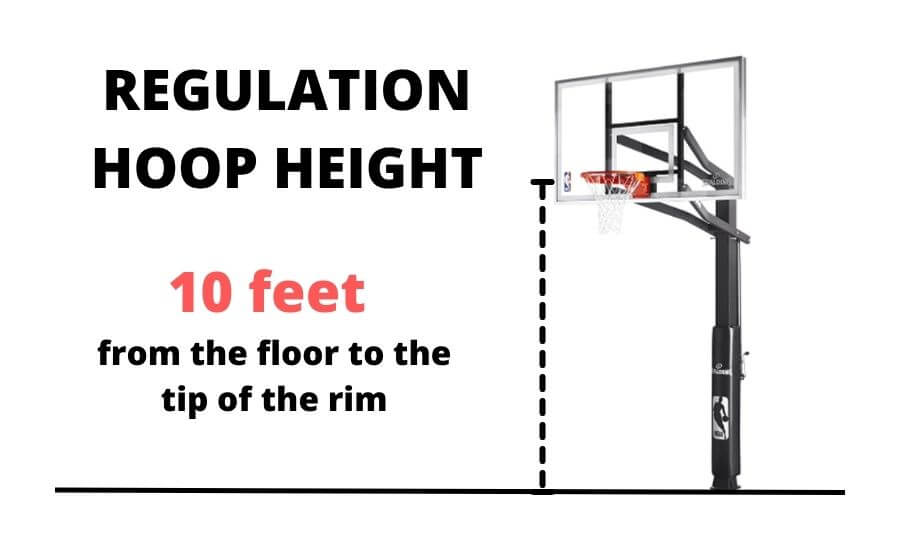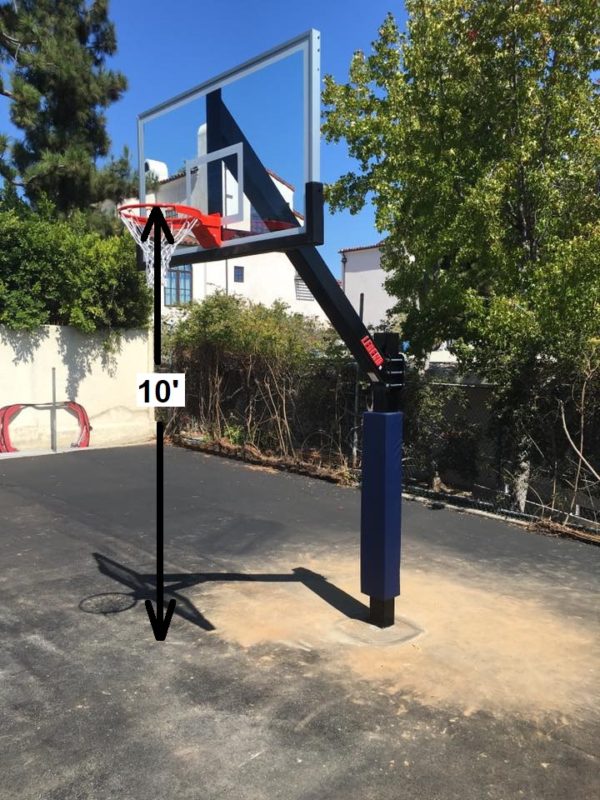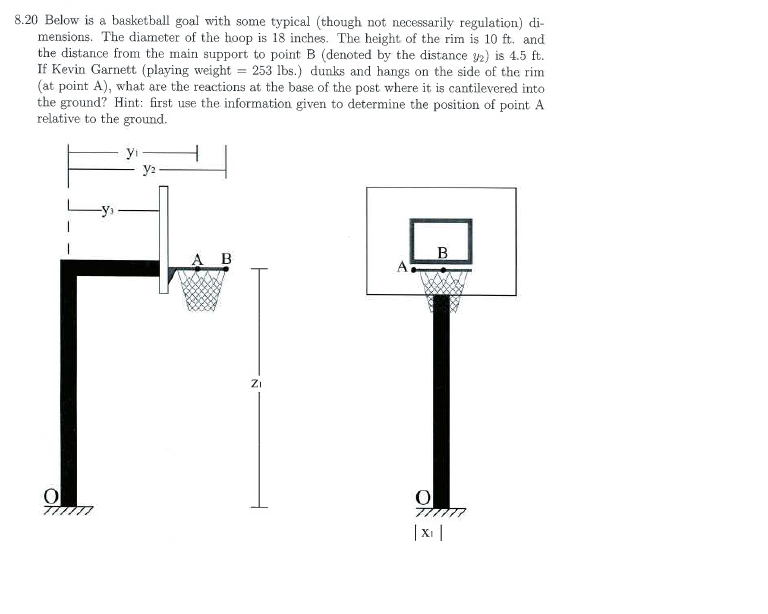Regulation Goal Height Basketball
The Regulation Basketball Hoop Height Basketball is one of the most popular sports in the world, enjoyed by millions of people of all ages. Whether you're a hardcore fan or just a casual player, understanding the regulations and rules of the game is essential. One of the key aspects of basketball is the hoop height. In this article, we will explore the regulation height of a basketball hoop, its importance, and some frequently asked questions about it. Regulation Height of a Basketball Hoop According to official regulations established by the National Basketball Association (NBA) and International Basketball Federation (FIBA), the standard height of a basketball hoop is 10 feet (3.05 meters) above the ground. This measurement is consistent across all levels of playing, including professional, collegiate, high school, and recreational basketball. Why is the Regulation Height Important? Adhering to the regulation height of a basketball hoop is crucial for maintaining fair competition and ensuring safety. Here are some reasons why the regulation height is so important: 1. Consistency: Having a consistent hoop height across all levels of play allows players to develop their skills and strategies under the same conditions. It ensures a level playing field for everyone involved. 2. Standardization: The regulation height promotes standardization within the sport. When players move from one level to another, they are accustomed to shooting at the same hoop height, making the transition seamless. 3. Competitive Balance: The regulation height prevents any team or player from gaining an unfair advantage due to the hoop being set at a different height. It ensures that the game remains fair and balanced. Now that we have a better understanding of the regulation height of a basketball hoop and its significance, let's delve into some frequently asked questions about this topic. FAQs about Basketball Hoop Height 1. Is the regulation height the same for both NBA and college basketball? Yes, the regulation height of a basketball hoop is the same for both NBA and college basketball, with the hoop being set at a height of 10 feet. 2. Can the hoop height be adjusted for children or recreational play? Yes, for younger children or recreational purposes, the hoop height can be adjusted to accommodate their needs and skill level. This helps promote their enjoyment and development in the sport. 3. Are there any exceptions to the regulation height? In some instances, basketball courts may have lower hoop heights to cater to younger players. However, these are typically reserved for non-competitive leagues and are not part of official regulations. Now that we've covered the basics and answered some common questions, let's explore different aspects related to basketball hoop height. 1. The Evolution of Basketball Hoop Height Basketball hoop heights have not always been a uniform standard. In fact, the regulation height of 10 feet we see today was established relatively recently. Previously, the height varied, ranging from as low as 6 feet to as high as 12 feet. It wasn't until the 1960s that the NCAA (National Collegiate Athletic Association) set the standard height at 10 feet, which was later adopted by the NBA and FIBA. 2. The Impact of Hoop Height on Shooting Technique The regulation height of the basketball hoop greatly influences shooting technique and skill development. Shooting from a 10-foot hoop requires players to develop accuracy, strength, and the ability to adjust their shooting motions based on varying court positions. This level of challenge helps players improve their shooting skills and overall game performance. 3. Common Variations of Basketball Hoop Height While the regulation height of a basketball hoop is consistently set at 10 feet, there are variations in certain basketball-related activities and competitions. For example: - Slam Dunk Contests: In slam dunk contests, you may often see the hoop height temporarily adjusted to encourage more spectacular and acrobatic dunks. This provides an opportunity for players to showcase their creativity and athleticism. - Wheelchair Basketball: In wheelchair basketball, the hoop height remains the same, but certain adaptations are made to accommodate the players' needs and abilities. The playing court is modified to ensure equal opportunities for wheelchair-bound athletes. - Miniature Basketball: Miniature basketball, played on smaller courts with reduced hoop heights, offers children and beginners the chance to learn and enjoy the sport before transitioning to the regulation height. FAQs about Basketball Hoop Height (continued) 4. Can the hoop height affect dunking ability? Yes, the regulation hoop height of 10 feet presents a challenge for players attempting dunks. It requires a combination of athleticism, timing, and leaping ability to successfully dunk a basketball. While lower hoop heights may make dunking easier, they are not used in competitive play. 5. Are there any risks associated with playing on regulation hoop heights? There can be risks associated with playing on regulation hoop heights, especially for younger or less experienced players. Jumping to reach the hoop height can result in injuries if proper technique and caution are not exercised. Players should always warm up and stretch to minimize the risk of injury. 6. Are there any international variations to the regulation height? While most countries adhere to the 10-foot regulation height, some regions may have their own specific variations. As basketball continues to grow internationally, it's essential for players to learn the specific regulations of the country or region in which they are playing. In conclusion, understanding the regulation height of a basketball hoop is fundamental for both players and fans of the sport. It ensures fair competition, promotes standardization, and provides a consistent playing experience at all levels of play. Whether you're shooting hoops in your driveway or playing in a professional league, remember that 10 feet is the magic number!  Image Source : basketballchoices.blogspot.com
Image Source : basketballchoices.blogspot.com  Image Source : hooption.com
Image Source : hooption.com  Image Source : bashabearsbasketball.com
Image Source : bashabearsbasketball.com  Image Source : sportandoutdoorhq.com
Image Source : sportandoutdoorhq.com  Image Source : www.pinterest.com
Image Source : www.pinterest.com  Image Source : simplypsychology.org
Image Source : simplypsychology.org  Image Source : geckosports.net
Image Source : geckosports.net  Image Source : regulationlatest.blogspot.com
Image Source : regulationlatest.blogspot.com
Basketball Goal Regulation Height - Basketball Choices
 Image Source : basketballchoices.blogspot.com
Image Source : basketballchoices.blogspot.com mammoth
What Is The Regulation Height For A Basketball Hoop? - ULTIMATE GUIDE
 Image Source : hooption.com
Image Source : hooption.com How To Measure A Basketball Hoop Backboard | BashaBearsBasketball.com
 Image Source : bashabearsbasketball.com
Image Source : bashabearsbasketball.com What Is The Regulation Height For A Basketball Hoop
 Image Source : sportandoutdoorhq.com
Image Source : sportandoutdoorhq.com height hoop regulation basketball
Pin En Tanitos
 Image Source : www.pinterest.com
Image Source : www.pinterest.com backboard hoop rim backboards regulation basquet cancha mounted baloncesto basketballkorb elevated rims basquetbol sondakikahaberim canchas
Sportember Epizód Ideg Official Nba Basketball Hoop Height Régész
 Image Source : simplypsychology.org
Image Source : simplypsychology.org Basketball Goal Regulation Height | Gecko Sports
 Image Source : geckosports.net
Image Source : geckosports.net height basketball hoop foot regulation rims rim goal measure should measuring why hoops team first youth players shoot
Regulation Basketball Hoop Height
 Image Source : regulationlatest.blogspot.com
Image Source : regulationlatest.blogspot.com backboard thou chegg
Backboard hoop rim backboards regulation basquet cancha mounted baloncesto basketballkorb elevated rims basquetbol sondakikahaberim canchas. Basketball goal regulation height. Sportember epizód ideg official nba basketball hoop height régész. Pin en tanitos. Basketball goal regulation height